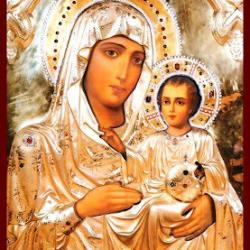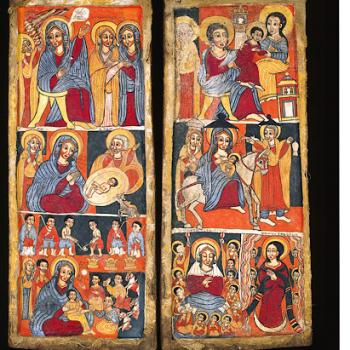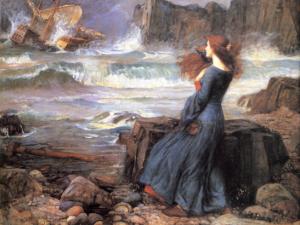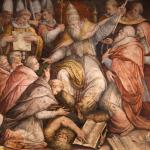If a film is good, does it cease to be “faith based?” That is my suspicion. Just as Bach is not categorized as Christian music so my favorite filmmaker, Tarkovsky, is seldom called “faith based.” Yet one cannot understand Tarkovsky without knowing something about Russian Orthodoxy and so the attribution is appropriate.

I watched a film almost as good as some of the lesser Tarkovsky last week thanks to Hope. Tired of Avengers and Avengers clones she demanded a movie with depth, soul, and intelligence. Ida was that film. You should see it if only because the film poses more questions than it answers, but not in a childish way. What is it to be Polish? What is it to be Jewish after the War? What if a person has both Jewish and Christian roots? How can Christianity be so Polish and yet universal (Catholic)?
It is easy to raise such questions, but Ida actually started to answer a few of them in a responsible way. There is no hope in power and no color in atheism. The human spirit needs tribalism for rootedness, but the human spirit cannot be limited by roots. The beautiful focus on trees and the sky make this point: Poles are grounded in the soul, if any people are grounded, but the sky stretches above them. God is in this soil, this bread and wine, but God is not only in this, but in all bread and in all soil.
Pawel Pawlikowski is a sort-of-Catholic and the film is soaked in religious themes: Jewish, Polish Christian, and Catholic. Polish Christianity is a tribe, while Jesus is catholic, universal, in the movie. If this film is not “faith based,” no motion picture is. You cannot make it ten minutes into the film without needing a good dose of catechism to catch the depths of the imagery. It is also a demanding film for historically illiterate Americans.
We should all know that poor Poland was invaded in 1939 by two brutal dictators in alliance: Hitler and Stalin. Of course, Soviet history lied about this pact and if you visit Moscow, the World War II monuments still list the start of the War long after the Soviets knifed their Polish neighbor for Hitler. Hitler betrayed Stalin and started an Eastern Front in World War II. Starting a land war in Asia was, as usual, a very bad idea, but the poor Poles managed to be in the middle again.
How do you pick sides between two of history’s great mass murderers? Hitler was wiping out the huge Polish Jewish community and killing thousands of Poles (inferiors to Hitler) to give Germany the living space he dreamed she needed. Meanwhile, Stalin, having killed his millions in the name of atheism and Utopian communism, was intent on killing millions more as he advanced across Eastern Europe.
There were precious few “good guys” in the results: Poles protected Jews, Poles killed Jews. Poles worshipped faithfully, Poles used their faith as an ethnic marker. Poles sided with Stalin to see social justice done and Poles sided with Stalin to side with history and the loot that would result. There were many victims, Polish Jewish people chief amongst them, and too few heroes. Communism “liberated” Poland to decades more tyranny and the redshirts were not much gentler than the blackshirts had been.
Ida is set seventeen years after the War. Things have settled down from the red of war and revolution to the grey of communism. Idealists who believed that atheism and socialism were the future met the future and it was ugly. The result was a disillusioned Polish ruling class. Polish Catholicism continued in a second-class position, but was too deeply rooted, even in the language, to be rooted out. The Church did not avoid corruption, either by the Nazis or the Communists, but there remained a universal truth at the core that neither tyranny could conquer.
When the title character learns she is Jewish, she starts a hero’s quest to find her parents’ bodies. We learn their fates . . . and nobody is left unscarred by the truth. The truth reveals that the “Red” option had been no option and that many a good Catholic had done well by betraying their Jewish neighbors to Nazis or Communists. Atheism had turned out to be helpless at giving answers to the deepest questions: a funeral done by the atheistic state compares very badly to even the crudest of the Christian symbols in the film.
What about the “fast life?” Could one live for pleasure? Pawlikowski shows that “sin” is pleasurable, and better than merely ignorance, but ends only in death or despair. The libertine grows up at last and becomes the dullard. The film ends with Ida pointed back toward the church, on the road, but not back yet.
This is a good picture of the West just now. Secularism is tired, but sectarian and narrow religion is worse. We need to walk back to the Church, but we have a long way to go. Watch Ida and talk. Talk about the ideas and make decisions. Don’t just watch, walk.















